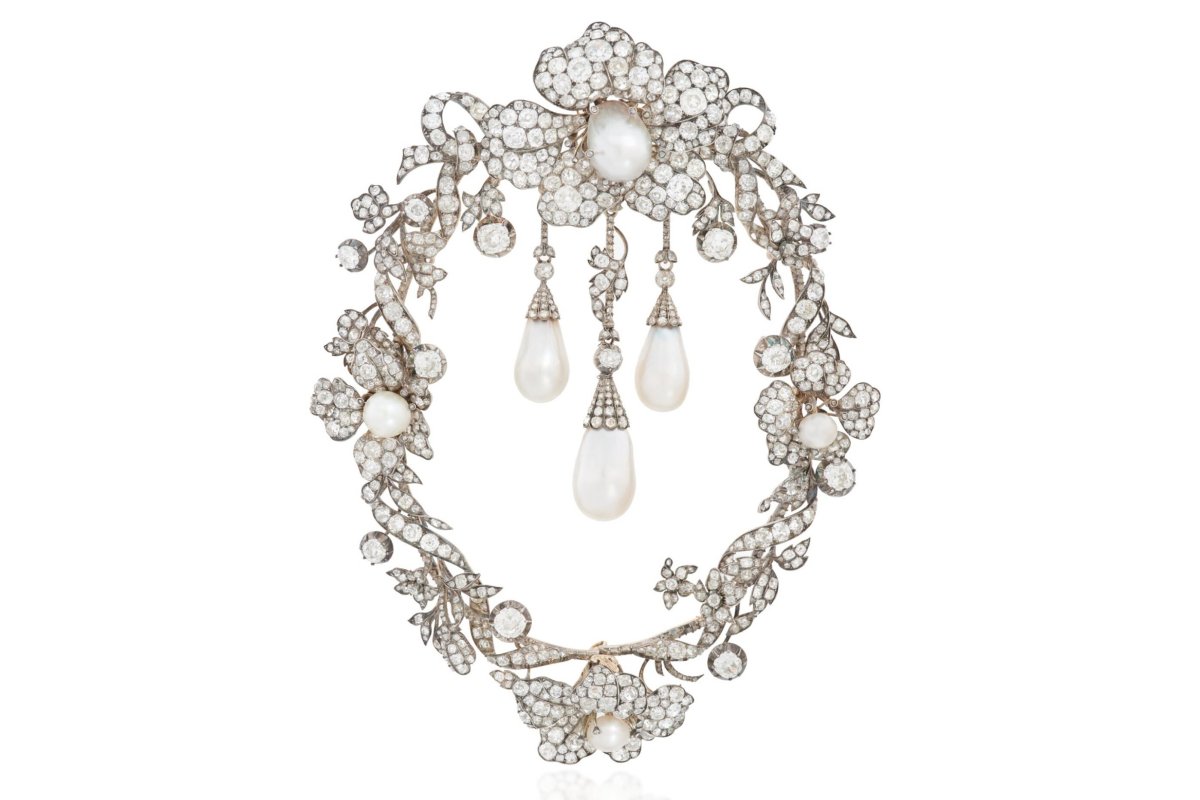
We’ve only really scratched the surface of the astonishing jewelry collection that was recently auctioned at Sotheby’s. Today, let’s take a closer look at the dynamite diamond and pearl corsage ornament from the sale.
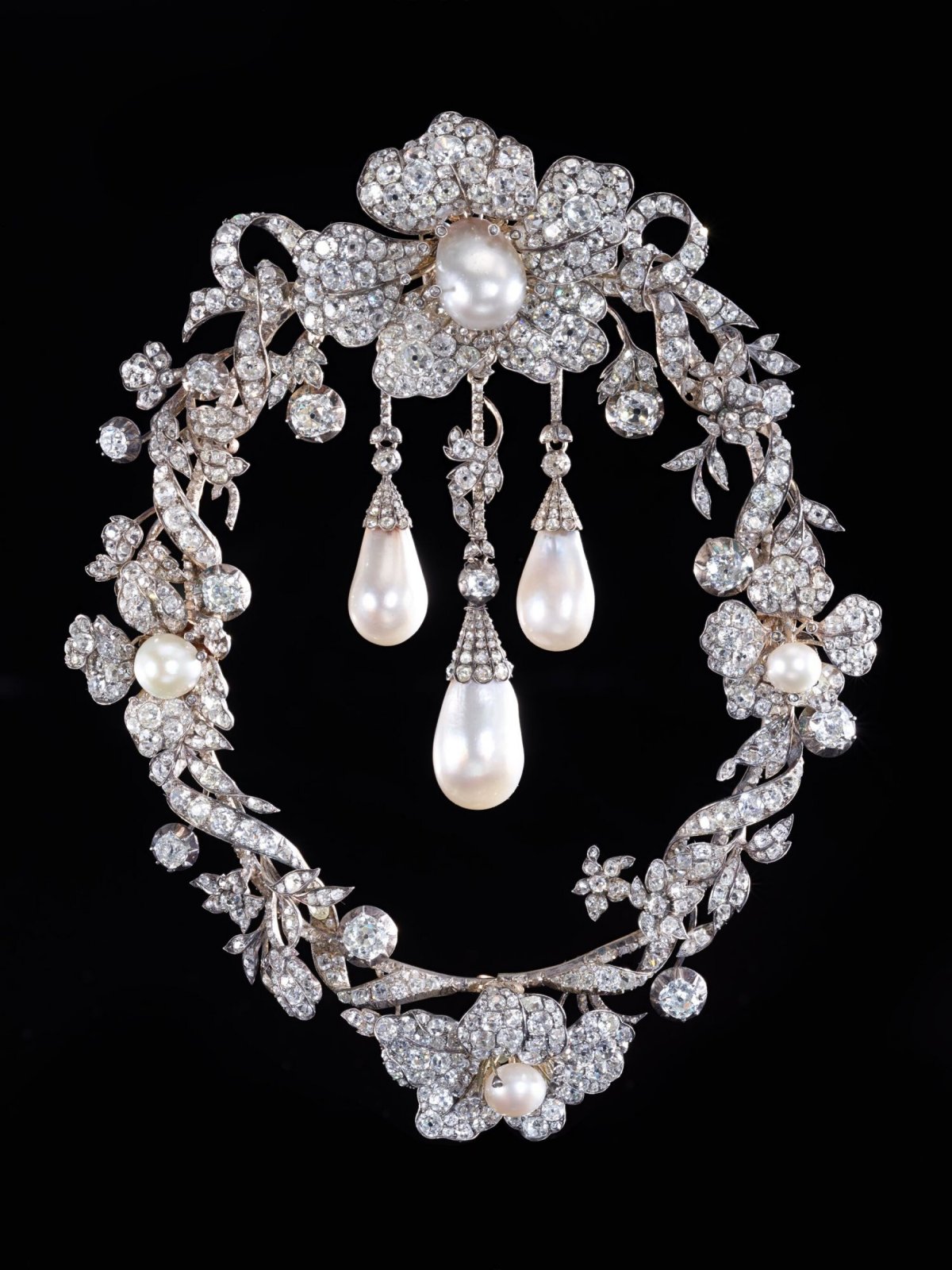
Sotheby’s describes this royal jewel as “exceptional and highly important,” and it’s tough to argue with that depiction. The piece looks a little like a necklace, but it’s actually a devant-de-corsage, an elaborate jeweled ornament intended to be affixed to the bodice of a gown. In this case, the corsage ornament literally mimics a corsage of flowers, with diamond and pearl blossoms, berries, and leaves incorporated into the piece.
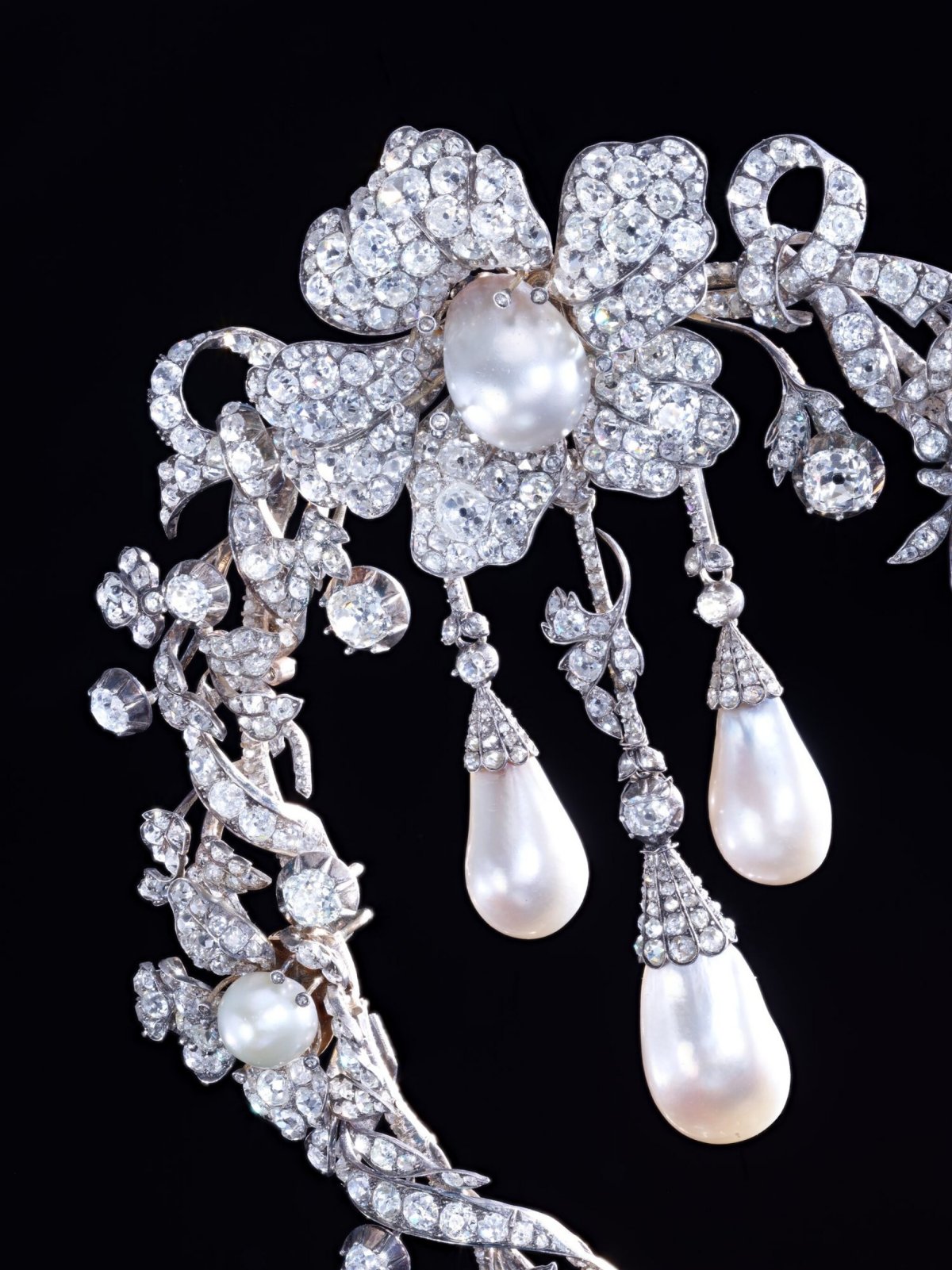
The remarkable jewel was made around 1865 by Emil Biedermann, the lesser-known other court jeweler who worked for the Habsburgs during the reign of Emperor Franz Josef I. Biedermann was a third-generation jeweler working in Vienna when he was named as one of two official suppliers of jewelry to the court of Emperor Franz Josef in 1848. (The other, of course, was Köchert.) Biedermann regularly completed commissions for various members of the Austrian imperial family, and Sotheby’s notes that the corsage ornament “stands out as one of his most ambitious creations.”
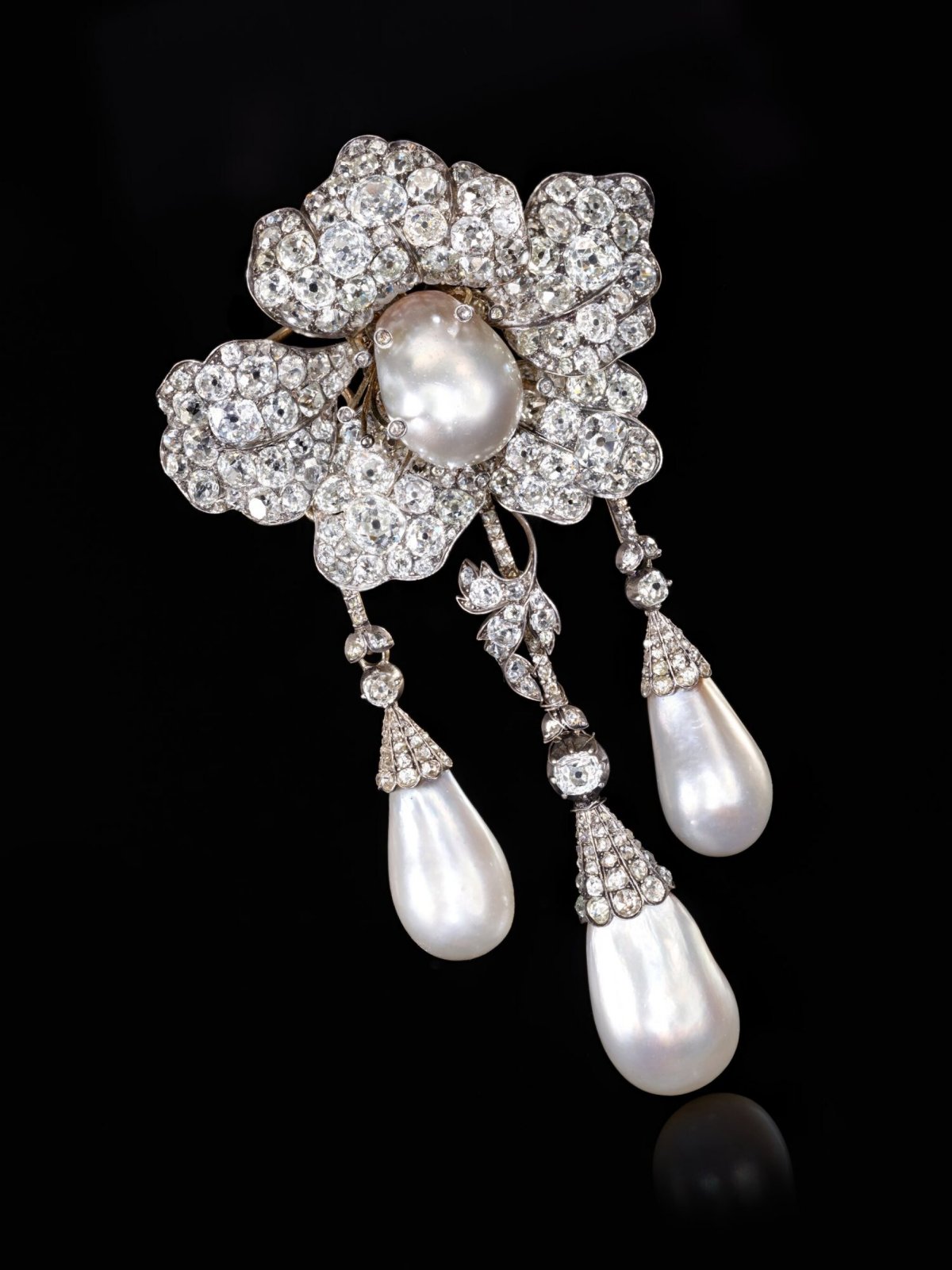
The jewel is as versatile as it is beautiful. Each of the blossoms on the diamond floral wreath is detachable, and the largest diamond and pearl bloom comes with a fitting so that it can be worn as a brooch, as pictured above, from which three detachable drop-shaped pearl pendants are suspended. Look at the way that the little diamond leaf curves around that middle pendant! Just absolutely gorgeous detail work.
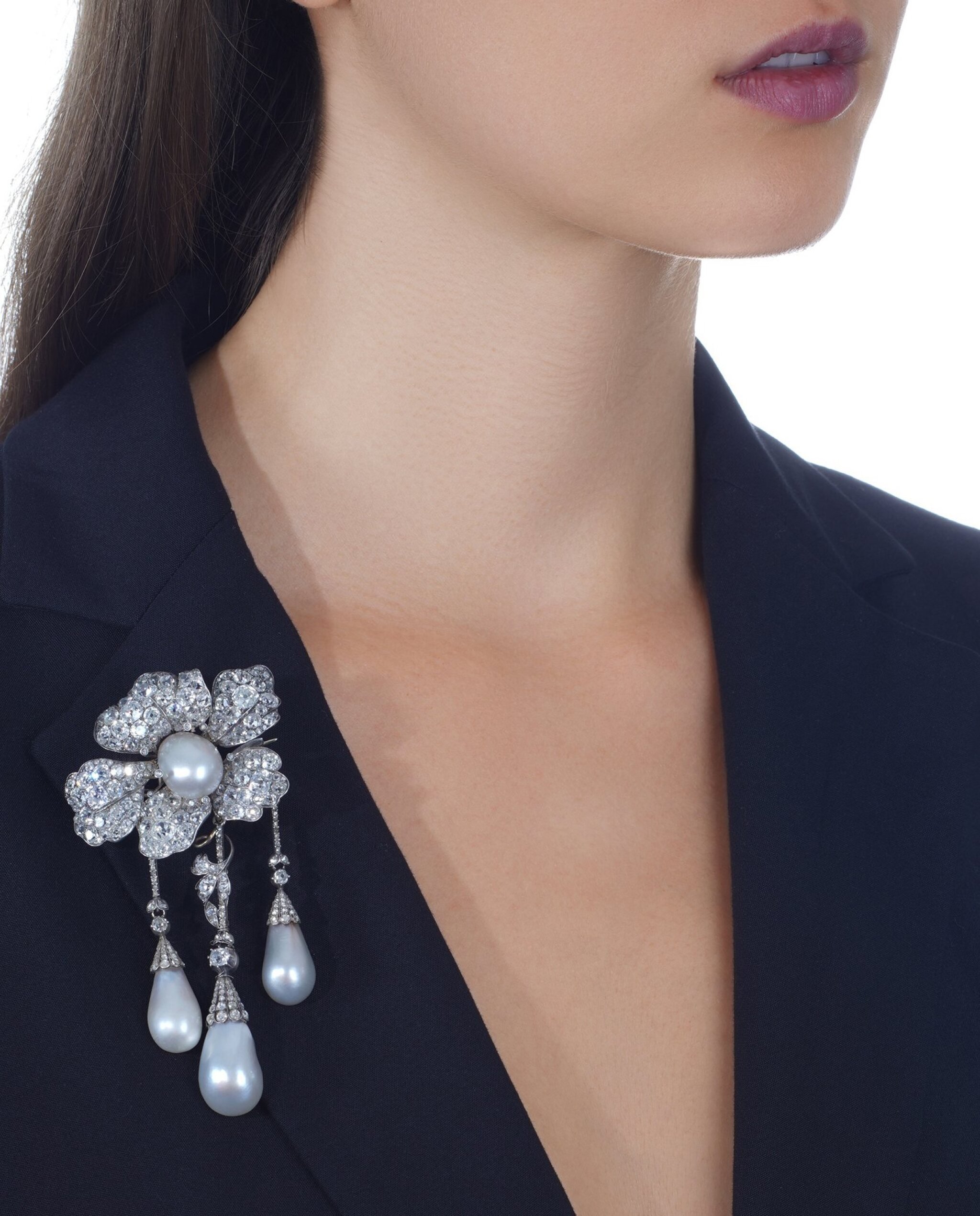
Here’s a photograph of the brooch superimposed on a model by Sotheby’s, to give you an idea of its scale.
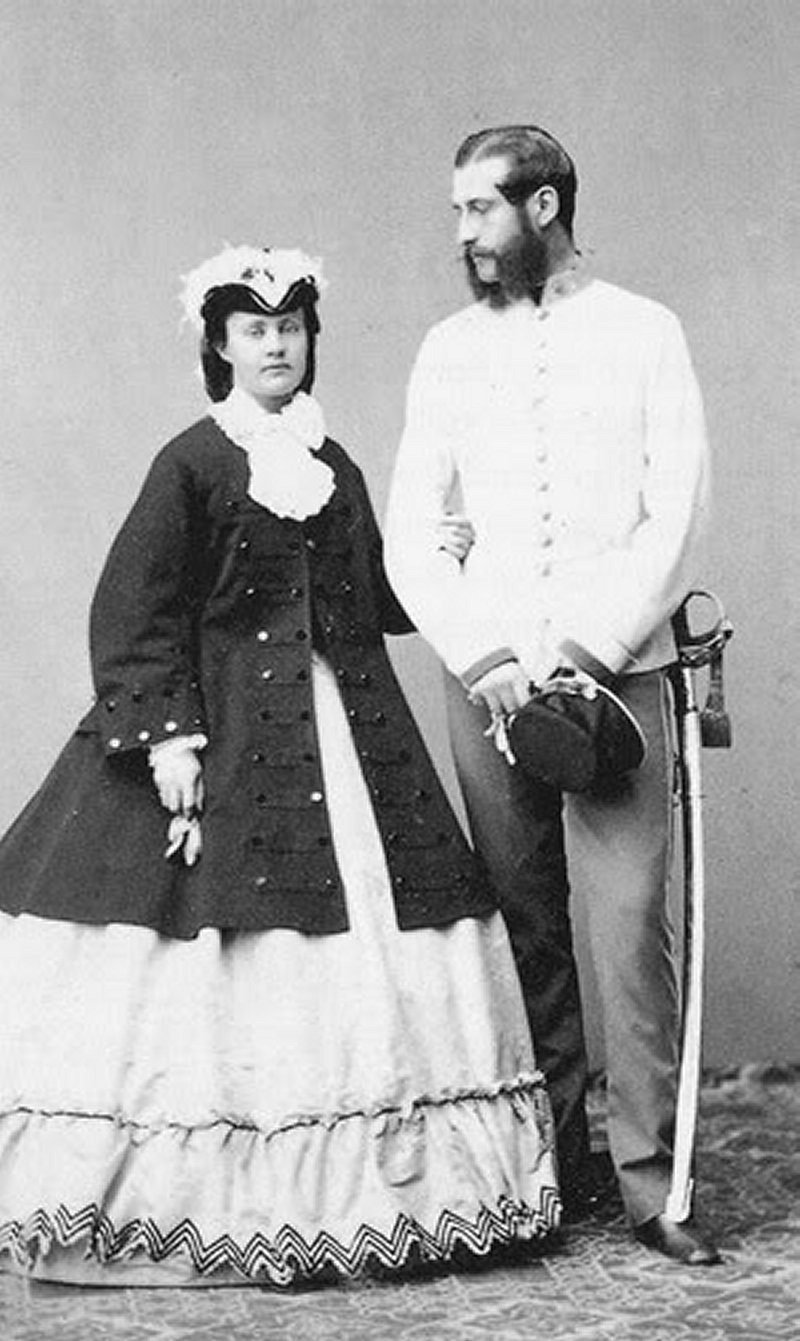
The gorgeous jewel was commissioned in 1865 by a royal duke who was engaged to be married to an Austrian archduchess. Duke Philipp (1838-1917) was nominally a member of a junior branch of the royal family that ruled Wurttemberg, a kingdom in southern Germany, but he had strong ties to several other royal families as well. Philipp was the only son of Duke Alexander of Württemberg and Princess Marie of Orleans. His father was a first cousin of both Queen Victoria and Prince Albert, and his mother was the second daughter of Louis Philippe, who was King of the French from 1830 to 1848. Philipp’s mother died shortly after his birth, and he was raised in Paris at the court of his grandparents until the French royal family headed into exile in Britain in 1848.
Duke Philipp joined his French relatives in Britain, where he was sometimes present for royal galas and events. He was on the guest list with numerous other British, French, Indian, and Dutch royals who attended a ball with the Prince of Wales and his new bride, Alexandra of Denmark, in the summer of 1863. In the weeks that followed, papers reported breathlessly on the expected wedding in Vienna of Philipp and Duchess Sophie in Bavaria, a younger sister of Empress Elisabeth of Austria. That anticipated marriage didn’t happen, and Sophie eventually married one of Philipp’s French cousins, the Duke of Alençon. But Philipp, who was serving with the Austrian army, had indeed turned his eyes toward Vienna and the imperial court of the Habsburgs, where he began courting another woman connected to the Emperor’s family.
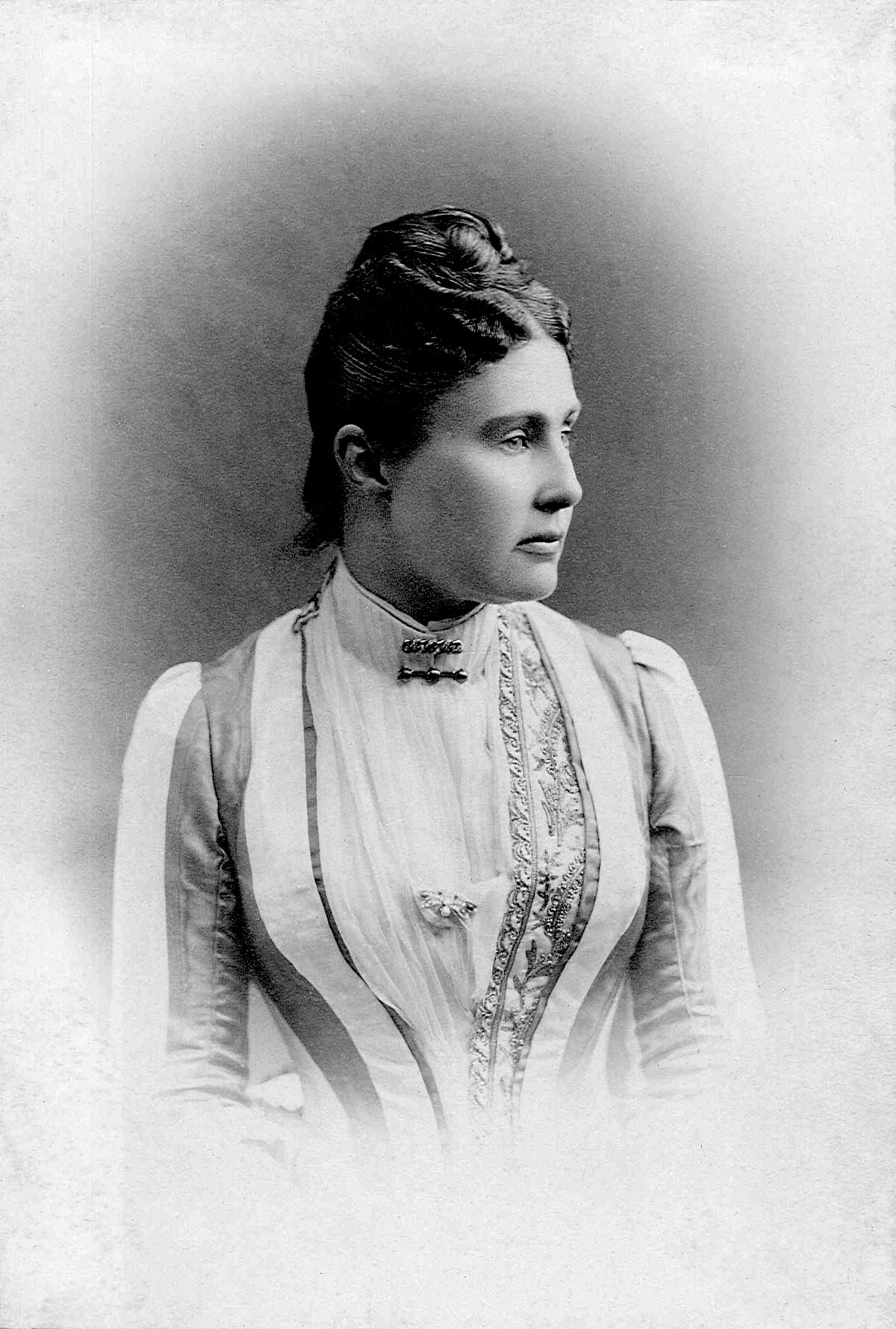
The Habsburg lady in question was Archduchess Marie Therese (1845-1927). Her father, the wealthy Duke of Teschen, was a grandson of Emperor Leopold II of Austria; he was also one of Emperor Franz Josef’s primary military advisors. Her mother, Princess Hildegard, was a daughter of King Ludwig I and Queen Therese of Bavaria. (Ludwig and Therese’s wedding, notably, was the occasion for the first Oktoberfest celebration in Munich.) When news of her engagement to Duke Philipp was first made public in October 1864, Archduchess Marie Therese was still grieving the recent loss of her mother.
The couple waited until the new year to be wed, marrying in a ceremony in the chapel of the Hofburg in Vienna in January 1865. Emperor Franz Josef and Empress Elisabeth were both present for the wedding, which took place on a wintry evening and would have been brilliantly illuminated by candlelight, with plenty of sparkling diamonds on the imperial guests.
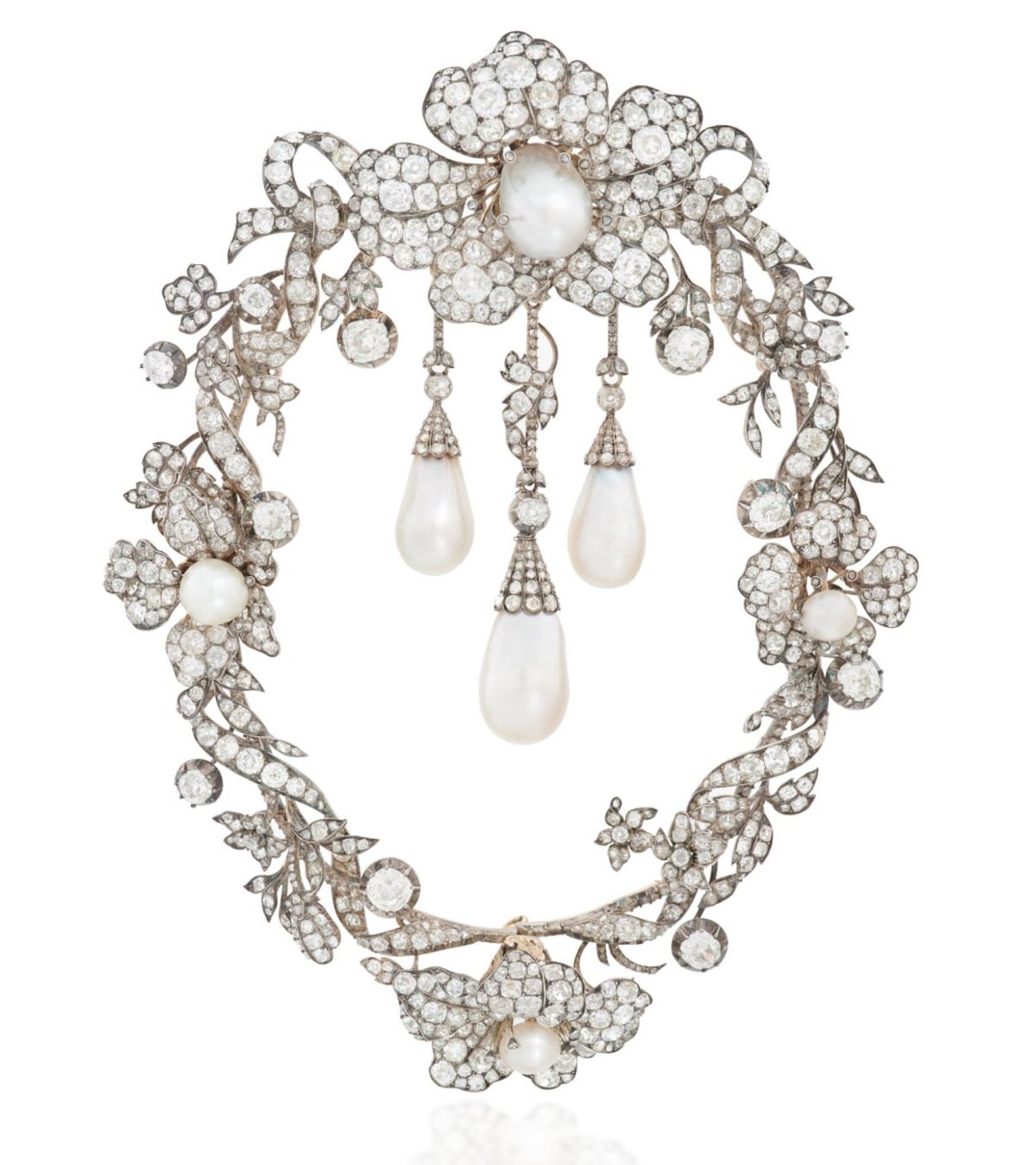
The new Duchess Marie Therese of Württemberg added some serious diamonds to her collection on her marriage as well, including the grand floral devant-de-corsage that her husband had ordered for her from Emil Biedermann. She would have had plenty of chances to wear the incredible jewel at court functions in Vienna, where the newlyweds lived in grand style in a palace of their own. They also spent significant time in France and in Britain, and in the interim managed to produce a family of five children. The current head of the House of Württemberg is descended from their eldest son, Albrecht.
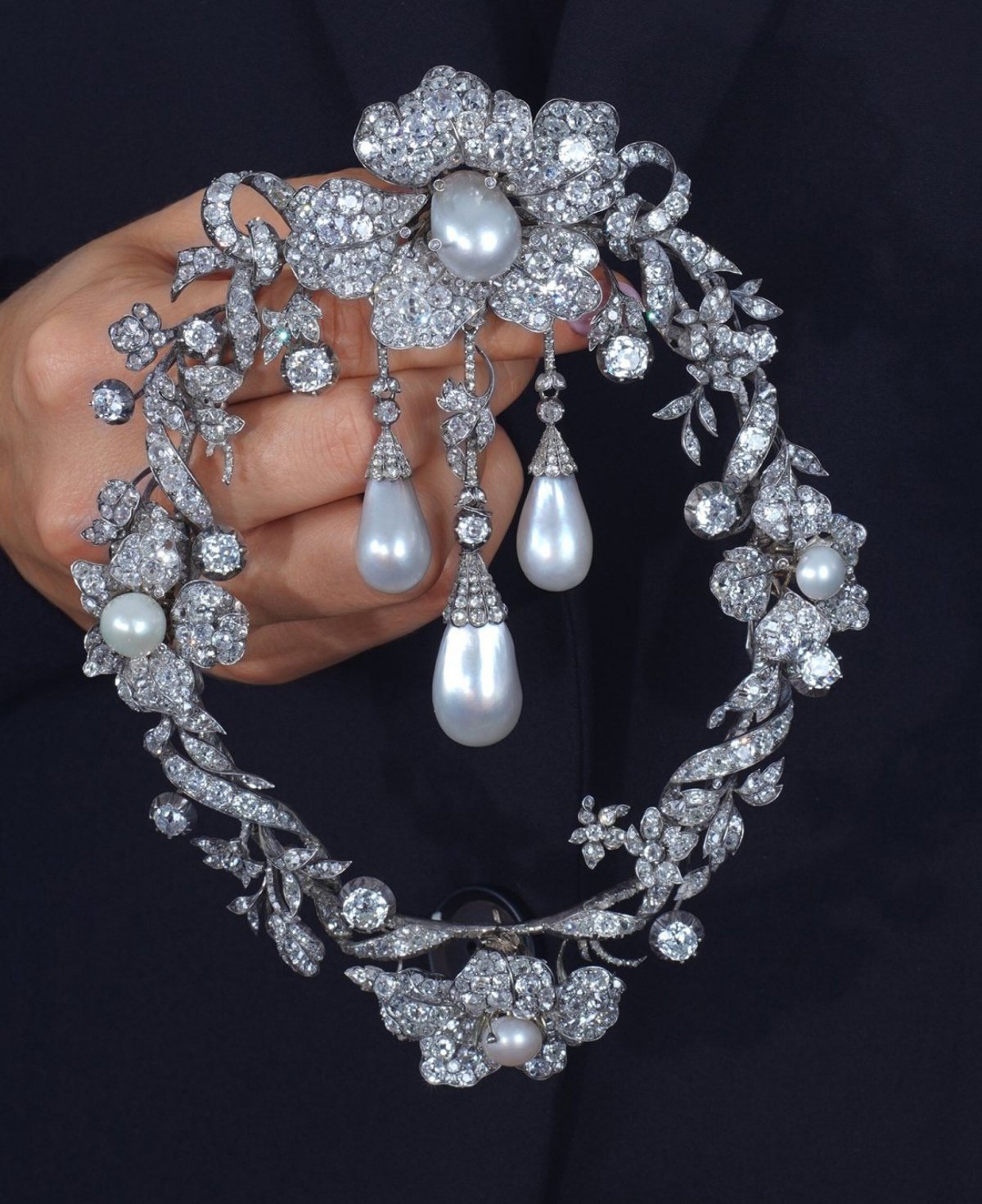
This November, an enormous collection of Württemberg jewels were sold by Philipp and Marie Therese’s descendants. The auction, held by Sotheby’s in Geneva, included her beautiful diamond and pearl wedding gift. Estimated to bring between 270,000-450,000 Swiss francs (or approximately $306,000-510,000 USD), the corsage ornament sold for an astonishing $1,054,100 francs (or about $1.2 million USD) when the hammer fell.
Leave a Reply
You must be logged in to post a comment.